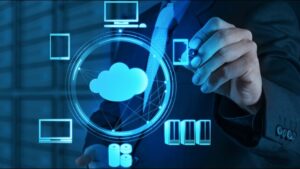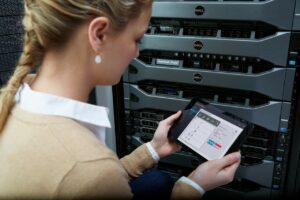 Today, many companies are moving to Modern Device Management (MDM) as the next step on their Digital Transformation journey. Most considering the move have already completed their Windows 10 migration and are looking to maximize efficiencies in their deployment workflows.
Today, many companies are moving to Modern Device Management (MDM) as the next step on their Digital Transformation journey. Most considering the move have already completed their Windows 10 migration and are looking to maximize efficiencies in their deployment workflows.
There are several factors and approaches to keep in mind when a company is planning a move from traditional IT to a Modern Management environment. MDM not only manages, secures and delivers modern applications, it provides a rich user experience across multiple devices and platforms. Success of the shift to the MDM paradigm, however, lies in something other than the deployment of the technology.
Putting “People” in the Forefront of Process and Technology
Culture is a primary concern in the path to Modern Management and users need to understand self-service is the new norm. Most applications and services now reside in the cloud, with a minimum on-prem infrastructure or reliance on traditional domain authentication. The latter calls for IT professionals to adapt and facilitate modern deployment, operational workflows, security and device lifecycle.
The boom in mobile devices and the migration of applications to the cloud are driving organizations and the workforce toward a new, modern approach to device and application management.
Modern Management Means Cloud-Based
Empowering employees to work smarter with the ability to work from anywhere at any time and on any device, boosts productivity and business agility. Strategically-minded IT teams are rethinking their existing tools for a more simplified, user-centric, modern device and application management approach, and embracing cloud-first for all workloads.
Cloud-based refers to applications, services or resources made available to users on demand via the Internet from a cloud computing provider’s server and includes these facets:
- Your identity (authentication and authorization) and administration console are in the cloud.
- Your application delivery process is in the cloud.
- Your data is synced to the cloud (no more local data alone).
- Your OS updates and applications will be coming from the cloud.
Clouds may be limited to a single organization (enterprise clouds), be available to many organizations (public cloud,) or a combination of both (hybrid cloud).
Identity in the Cloud (Cloud-based Authentication)
 Anytime / Anywhere secure access to data and applications requires a process to validate your identity and what it can access needs to be available. Cloud-based user authentication removes the necessity of keeping an organization’s IT infrastructure on-premises while still maintaining control over user access, thereby allowing administrators the ability to update and make changes in real time. Cloud-based authentication / authorization to resources are critical to anywhere / anytime access to data and applications
Anytime / Anywhere secure access to data and applications requires a process to validate your identity and what it can access needs to be available. Cloud-based user authentication removes the necessity of keeping an organization’s IT infrastructure on-premises while still maintaining control over user access, thereby allowing administrators the ability to update and make changes in real time. Cloud-based authentication / authorization to resources are critical to anywhere / anytime access to data and applications
Cloud-based authentication / authorization enables several options including access controls to documents, files, single-sign-on, authorization logs, and much more.
Re-Images No More
Do you ever re-image an iPhone, Android, or Chrome device?
Of course not!
The term “image” is a legacy terminology, which will continue to be used for years to come, as we fully transition into the new MDM paradigm. Moving forward, the device OS comes equipped on the device. If you need to redeploy the device, you simply “RESET” it for a new user. In the advent of MDM, the concept of images is being replaced with “user profiles.”
Network Configuration Impacts
In this modern world, everything is coming from the cloud (authentication/authorization, OS updates, applications installations and updates, and data). This means a significant impact on your network topology may require you to modify your current topology configuration.
There are several options for minimizing network impact including embedded Windows 10 features as well as third-party tools.
Data Is Not Only Stored Locally
Wide adoption of tools like OneDrive, Dropbox, Box, Sync and others, allow users to store and access data securely on the cloud and provide the capability to update and sync the files and folders you choose across devices.
Applications Delivery and Updates
 Similar to the technology shift in device management, Application Management is also evolving, albeit the shift started long ago, and it has been a slow and gradual one.
Similar to the technology shift in device management, Application Management is also evolving, albeit the shift started long ago, and it has been a slow and gradual one.
Many applications have moved to a Software as a Service (SaaS) delivery model (virtualized, web-based or a combination of the two) where the process of authentication/authorization can be passed automatically (single sign on) behind the scenes, so the appropriate permissions are used based on the user.
If the application is a classic Win32/Win64 that needs to be installed on the device, the source files will be coming from the secure cloud-based locations.
For these locally store apps, there are a couple of fundamental changes that need to take place.
- Applications need to be smarter — know when and how to update themselves
- Applications need to have minimum impact on base OS
New application installation formats have been introduced in MSIX format (a packaging format built to be safe, secure and reliable, based on a combination of .msi, .appx, App-V and ClickOnce installation technologies), which is an update to the traditional MSI package addressing the above mentioned point.
No Dependency on Device
To the end-user, a device is simply a way to access files, data and applications. What matters is the software’s intuitive user interface is based on device format, screen-size, keyboard, and mobility and the end-user can adapt easily and effectively.
Whether a device breaks or is lost, security administrators need an effective process to lock and wipe the device, and fulfill the end-user’s expectation of rapid and effective replacement after reporting the problem. Once the end-user receives the new device, all data, applications and permissions are promptly “restored” to the new device upon login.
While the end user is waiting for the device to be fixed or replaced, they can use a loaner device, access their data via web portal or if they have been setup access their applications remotely.
Summary
MDM is key to having a fully modern and productive enterprise, empowering workers with the applications that they need, when they need them. Contact a Dell Technologies representative to learn how Dell Technologies Services can help your organization create a roadmap to Modernization, enabling a modern approach to device and application management.


